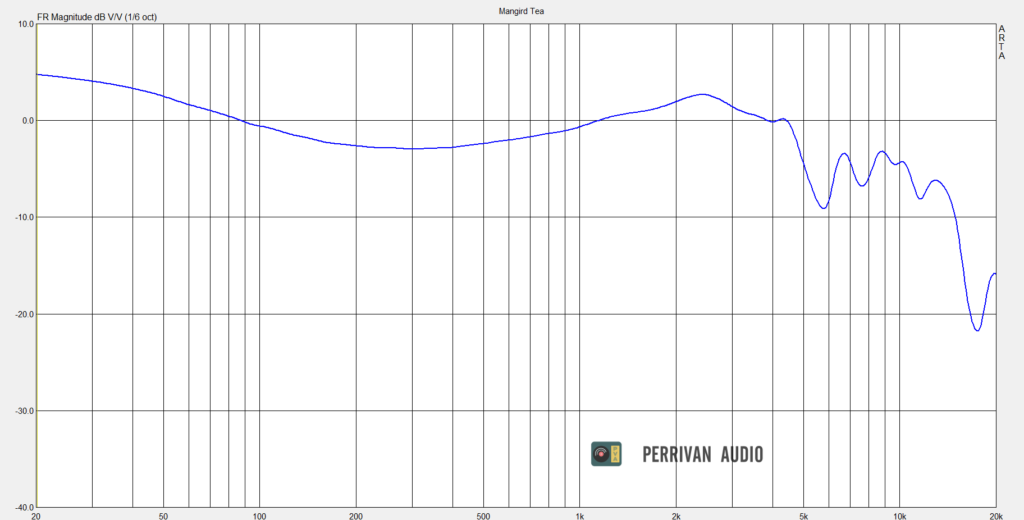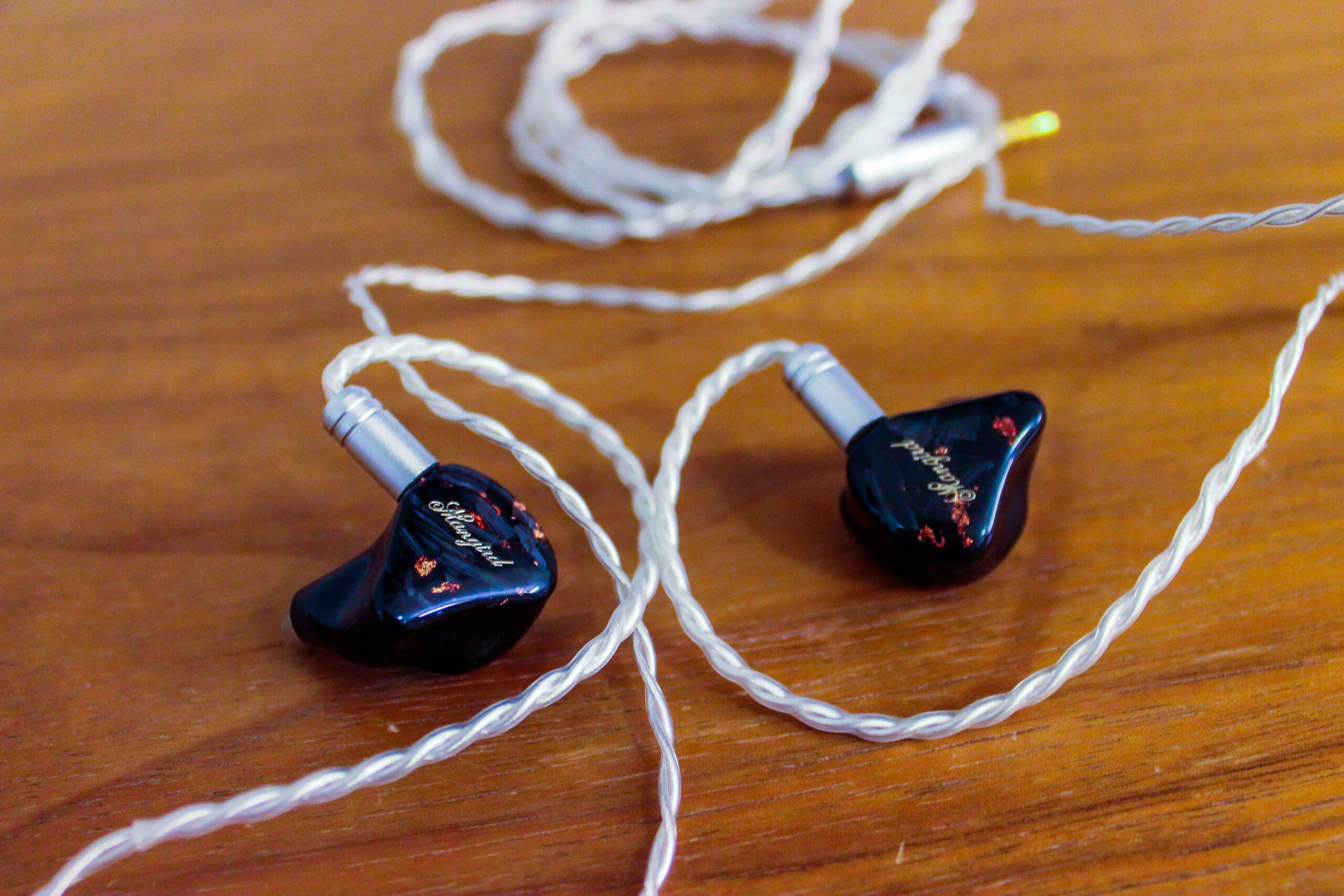Updated: Jan 24
Pros: Clean and balanced sound, Great separation and layering, Comfortable Fit, Gorgeous faceplate and construction
Cons: Slightly unnatural tonality (especially in orchestral tracks), Subpar cable quality (braiding), Minimal accessories
Driver Setup: 6BA + 1 DD (2 Knowles RAD-33518 for high frequency, 4 Sonion 2600 for mid-frequency, and 1 German Bio-titanium dynamic driver)
Price: $269 (USD)
Intro
Disclaimer: This review set was graciously lent to me by a friend and the review is written of my own accord.
This is a review for the Mangird Tea IEM. They are purportedly the successors to the “Mangird Ten”, which I have yet to find any information about. To help us wrap our minds around the bizarre name, it is claimed that these IEMs took a long time to brew just like tea and “displays details as [if] you are tasting the tea” …
Not the most confidence-inspiring writeup, but without further ado, let’s dive right into the important stuff.
Accessories (Score: 6/10)
The accessories are as spartan as it gets at this price range. All packed in an understated black paper box is a round brushed metal case supplemented with some tips. The bare minimum and even seem a little shoddily put together without much thought put into them. However, these are definitely sufficient to get you started, and is all you need to start enjoying music on them.
Build Quality and Fit (Score: 8.5/10)

The IEMs come bundled with a silver 2-pin cable. The cable itself seems sturdy, but the braiding is not the best that I’ve seen. The braids were inconsistent and loose at a few points. I can’t confirm if this was a common issue or an isolated occurrence. The cable was also quite stiff and doesn’t handle well. Small complaint and not a problem for most if you’re going to just switch out to your own cables. I have seen sets with both MMCX and 2-pin, depending on where you get them. (mine was 2-pin)
Moving on to the buds themselves, these IEMs look like ornate gems. The resin build feels premium to touch and the faceplate is adorned with gold foil bits. Everything about it’s built and aesthetic exudes a certain matured and understated elegance.
The fit was overall very snug although the buds are on the larger side. These have a rather long nozzle and enable a relatively deep insertion. Hence isolation was superb on the Tea.
Sound (Score: 8.7/10)

Frequency Response Graph of the Mangird Tea
Sources Used
- Shanling M3s
- Schiit Modi3 –> Schiit Magni Heresy
Albums and Tracks tested with
- Berliner Philharmoniker – Dvorak: Symphony No.9
- Avicii – Avīci (01)
- Greenday – American Idiot
- McFly – Memory Lane and Anthology Tour [The Hits Live]
- Michael Bublé – To Be Loved
- Post Modern Jukebox
- The Vamps – Night & Day and Wake Up
Bass (Score: 9/10)
The bass is one of the best-done parts of the Mangird Tea. It might be the work of the fancy “German Bio-titanium” dynamic driver but it just is so tastefully tuned. Natural is the word here as it extends very well into the sub-bass and enjoys a relatively flat response without any bloating. Regardless of what you throw at it, it always remains in control and churns out the bassline with a certain elegance.
On Avicii’s “Friend of Mine” and “Without You”, the bass was very well-layered and expansive. It isn’t in any way overpowering and it always complements instead of taking center stage. It was always very energetic and light yet never once came close to being anemic. No muddy thuds and no messy bleeds. Drums do have a nice punch to them and decay relatively fast and naturally, without adding too much warmth.
Mids (Score: 8/10)
The Mangird Tea almost does it all, but in my opinion, was held back by its midrange. I have read many reviews on how great the tonality is on the Mangird Tea but this is one place where I must disagree. If there is one flaw in the tea, it would be this unnatural tonality.
The midrange tonality is slightly off and is especially apparent in certain tracks. In its defense, it’s not immediately obvious on every track and during my time with them, the times they were most obvious were on instrumental and orchestral tracks. Listening to Dvorak’s Symphony No. 9 IV Movement – “Allegro con Fuoco”, sections where the strings came together with the trumpets for the melodies just had this odd quality to them.
However, as a whole, the midrange still performs well. It’s technical ability still shines through, especially on crowded tracks, such as Greenday’s “Give Me Novacaine/She’s a Rebel”. The blending of the vocals with the guitars was just done so cleanly it’ll make you fall in love with a song you already love so much.
Treble (Score: 8.5/10)
The treble response on the Mangird Tea is stellar. The treble extension is a very good reflection of its superior technical ability. Again, on Greenday’s “Give Me Novacaine/She’s a Rebel”, the crash cymbals come out ever so smoothly with good air and sparkle. Despite that, it never came across harsh or grainy. The timbre in the highs was pleasing and complemented the balanced sound signature of the Teas very well. The treble here is very mature and deserving of every bit of praise.
Overall
I really enjoyed the Tea for its layering and separation. Instruments and musical lines can all be heard distinctly and come together coherently and every listening session with them was always so immersive and enjoyable. The targeted sound signature is very coherent and the relaxed balanced presentations make long listening sessions perfectly comfortable. The Mangird Tea manages to perform at critical listening (owing to its excellent detail retrieval) and yet retains much musicality.
Conclusion

The Mangird Tea is almost a masterclass, offering immense sonic performance for its price. It is a set that could have been an unrivaled IEM in its price range for the balanced and matured sound signature it puts out, only to be held back by its slightly off tonality. The included cable also unfortunately leaves much more to be desired considering the price tag of the IEMs. Nonetheless, I wouldn’t hesitate to vouch for the quality of the IEMs themselves in terms of both sound and build.
Click HERE for our grading list for earphones
